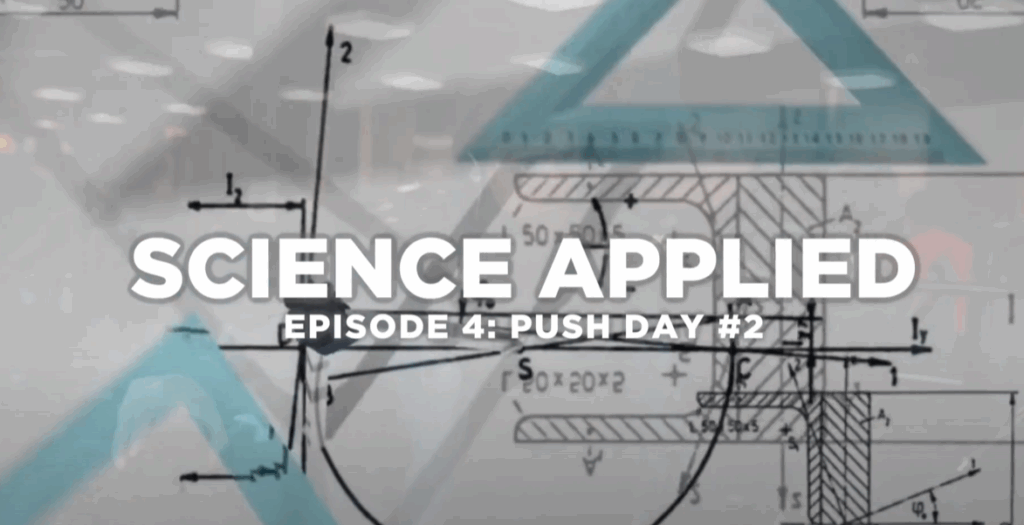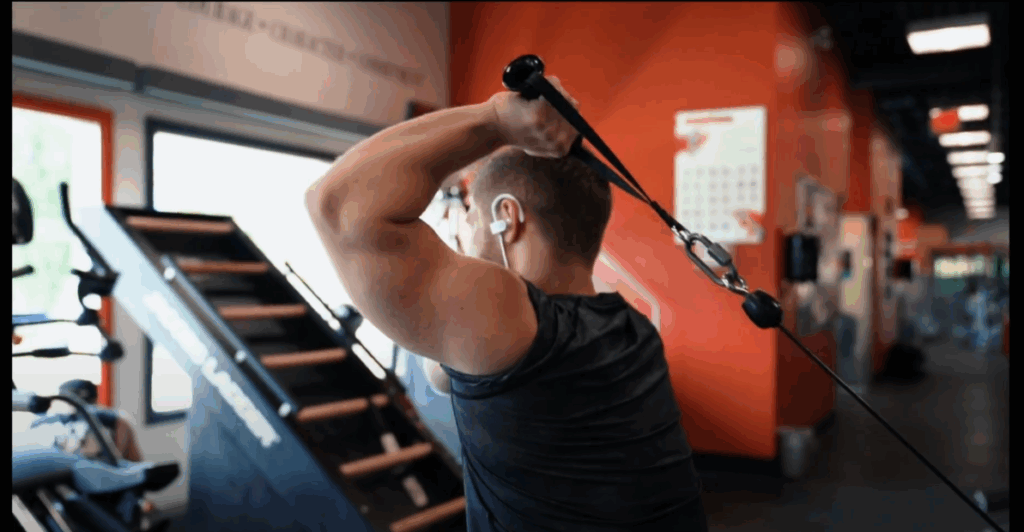When following a push-pull-leg (PPL) training split, each muscle group is typically worked twice per week. This second push session of the week is tailored for hypertrophy, targeting the chest, shoulders, and triceps with a fresh set of exercises and loading strategies. Rather than repeating the same routine twice, altering your movement selection, grip angles, and rep schemes can spark new growth and minimize plateaus—a concept supported by research on daily undulating periodization (DUP).
In this article, we’ll break down an advanced push workout with strategic exercise sequencing and evidence-based techniques to optimize muscle growth, particularly for intermediate lifters.

1. Barbell Overhead Press: 4 Sets of 6–8 Reps
We’re starting the session with a vertical press to place the shoulders in the spotlight. The barbell overhead press serves as a foundational strength movement that promotes powerful deltoid development. While dumbbells may yield higher muscle activation due to increased stabilization demands, barbells are superior for progressing in strength, especially in the 6–8 rep range.
To perform this lift effectively:
- Begin with feet shoulder-width apart and a solid base from lifting shoes.
- Brace your core and slightly tuck the hips forward.
- Drive the bar overhead in a straight path—slightly back at the top to keep it stacked above your shoulders.
- Using a lifting belt can aid intra-abdominal pressure, improving force output.
This heavy compound sets the tone for the session, and by emphasizing shoulder dominance early on, you allow fresh energy to target this key upper body area.
2. Close-Grip Bench Press: 3 Sets of 8–10 Reps
Next, we transition to a chest and triceps compound press using a shoulder-width grip. Unlike wide-grip benching typically used for maximal strength, this version encourages a greater range of motion and increases recruitment of the upper chest and triceps.
Technique notes:
- Use a moderate arch in your back but avoid excessive powerlifting-style form.
- Lower the weight under control and pause briefly at the bottom.
- Focus on a steady tempo to emphasize muscular tension over momentum.
Research indicates that close-grip pressing increases clavicular pectoral activity, making it a smart variation for those looking to build their upper chest. If chest development is your priority, consider performing this before the overhead press.
3. Incline Dumbbell Fly (Optional): 3 Sets of 10–12 Reps
While compound pressing alone is often sufficient for chest hypertrophy, adding isolation work can help if your pecs are underdeveloped. Incline dumbbell flyes emphasize the stretch position, which is a key driver of muscle growth according to recent studies.
Form cues:
- Set your bench at a moderate incline (30–45 degrees).
- Lower the dumbbells slowly until you feel a deep stretch in your chest.
- Squeeze your pecs at the top, keeping a slight bend in the elbows.
Despite cables offering more consistent tension, dumbbell flyes create a stronger stretch, especially at the bottom. This “weighted stretch” component appears to play a unique role in hypertrophy—particularly for hard-to-grow areas.

4. Superset: Rope Upright Rows + Banded Lateral Raises
To target the lateral deltoids effectively and efficiently, this superset combines two movements with distinct resistance profiles.
Rope Upright Row: 3 Sets of 12–15 Reps
Though sometimes controversial due to shoulder impingement concerns, upright rows can be safe and effective when performed correctly:
- Use a rope attachment to allow natural wrist movement.
- Pull with elbows slightly below shoulder level.
- Think about pulling the rope outward as you lift to encourage shoulder abduction and reduce trap involvement.
This cue mimics a wider grip, which EMG data suggests enhances lateral delt activation.
Banded Lateral Raise: 3 Sets of 15–20 Reps
The banded version introduces increasing resistance throughout the movement, challenging the delts more at the top where they are strongest.
Execution tips:
- Step on a resistance band and raise the handles laterally.
- Maintain tension throughout the range.
- Perform high reps to flood the side delts with blood and generate metabolic stress.
Using both cable and band variations throughout the week exposes your muscles to different tension curves, a smart strategy for complete development.
5. Single-Arm Overhead Triceps Extension: 3 Sets of 12–15 Reps
Triceps receive indirect work from all the pressing movements, but direct isolation ensures the long head—the biggest portion—is adequately trained.
Why this variation?
- The overhead position targets the long head more effectively.
- Training one arm at a time improves symmetry and minimizes compensation from dominant limbs.
- You can stabilize the working arm by gripping the opposite shoulder to reduce body sway and isolate the triceps.
Perform these slow and controlled, focusing on a deep stretch at the bottom and a hard contraction at the top.
6. Finisher: Medicine Ball Push-Ups to RPE 8
We close the workout with a bodyweight compound move that activates the chest, shoulders, and triceps together in a high-rep challenge.
Why use an unstable base?
- Studies show that instability increases triceps activation during push-ups.
- Using a medicine ball introduces instability and adds difficulty even with bodyweight alone.
Perform reps until you feel like you could only complete 1–2 more (RPE 8), then stop. Over time, aim to increase reps weekly as a progressive overload method.

Total Weekly Volume Guidelines
By combining this second push session with your earlier one, you’re accumulating a well-balanced weekly volume for the upper body pushing muscles. Here’s a rough guide to what’s ideal per muscle group per week:
- Chest: 12–18 sets
- Shoulders (Delts): 12–20 sets
- Triceps: 10–15 sets
Beginners may want to start at the lower end and gradually build up, while advanced trainees can add extra isolation movements or more volume depending on recovery and goals.
Final Thoughts
This intelligently designed push workout offers variety, strategic overload, and sufficient volume to build strength and muscle without redundancy. Remember, exercise order should reflect your personal weak points—train your lagging areas first in the session while you’re freshest.
Whether you’re an intermediate lifter chasing upper chest growth or an advanced trainee looking to hammer your side delts, this routine provides the science-backed foundation to make real progress.



